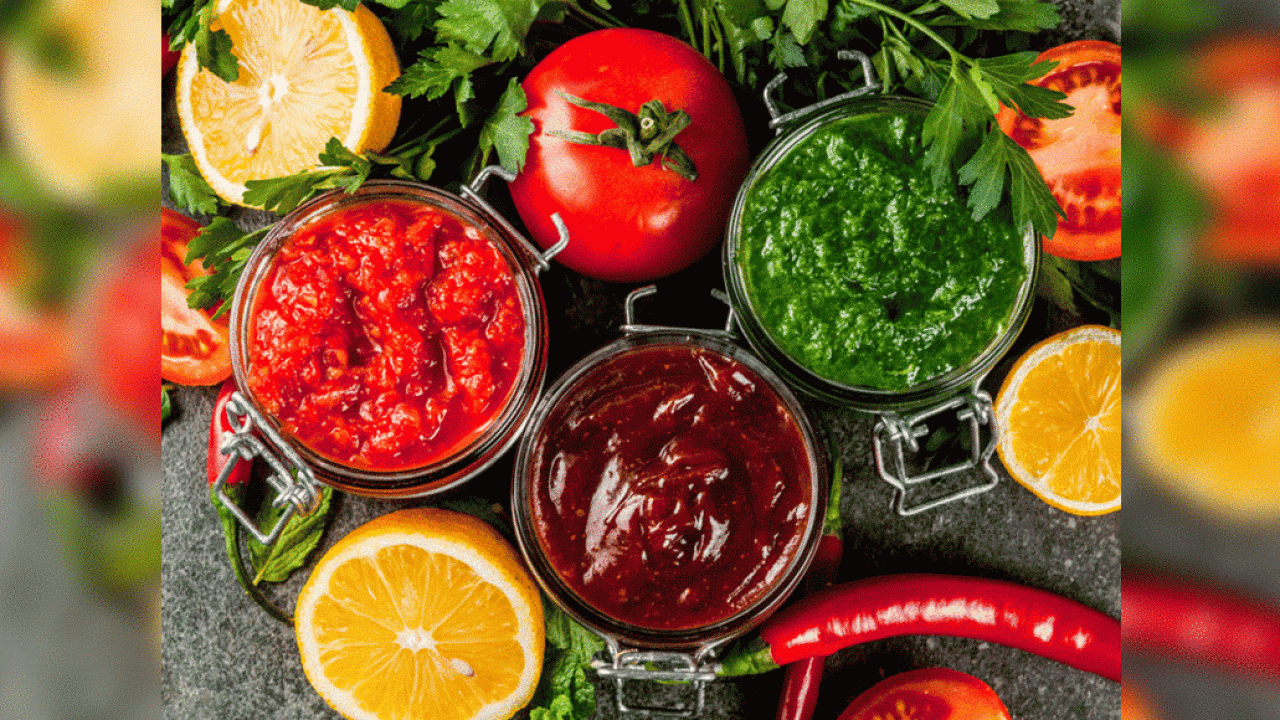
Be it a spicy, eye-watering chutney or a sour, tongue rolling type, no meal is ever complete without a distinct chutney as an accompaniment. Read on to know more about the varieties of chutneys and how they can benefit your health.
Key Highlights
- A good, well-prepared chutney can add to the flavour and experience of each meal
- Chutneys are delicious condiments that are unique to the Indian subcontinent
- Read on to know more about the varieties of chutneys and how they can benefit your health
Every dish in Indian cuisine is an extraordinary blend of spices that can mesmerize the taste pallets with every bite. And truth be told, no meal is ever complete without a distinctly flavoured chutney as an accompaniment. Chutneys are delicious condiments that are unique to the Indian subcontinent. Be it a spicy, eye-watering chutney or a sour, tongue rolling type, chutneys add to the flavour and experience of each meal. Apart from being a part of dishes from across the country, chutneys also represent the variety of traditions and cultures that it belongs from. The sentimental value associated with it adds a touch of homelike familiarity that is difficult to let go of. When talking about the health benefits, all chutneys can be excellent for gut health.
Chutney types and benefits
Here are some common chutneys and their benefits:
- Tomato chutney: Also known as tamatar ki chutney, the preparation of this tangy chutney can vary from slightly spicy to sweet and the main ingredient used is tomato. Tomatoes are a rich source of antioxidants such as zeaxanthin and lutein that can help enhance eye health. Furthermore, they are a rich source of fibre, potassium, and various vitamins.
- Mint chutney: One of the most widely used chutneys, mint chutney is commonly known as pudina chutney. Mint is used as its main ingredient. Apart from having excellent anti-inflammatory properties, mint can relieve symptoms of indigestion, nausea, bad breath, and cold.
- Tamarind chutney: From chaat to dahi bade, eating lip-smacking street foods with the glistening layer of tamarind chutney, also known as imli ki chutney, floods the taste buds with its tangy, sweet, and sour flavour. Tamarind has anti-inflammatory properties and can work wonders for diabetes, digestion, and liver health.
- Mango chutney: Also known as aam ki chutney, this chutney includes raw mangoes as its main ingredient. The flavour can differ from sour and spicy to sweet and spicy depending on the preparation. Raw mangoes are a source of vitamin C, magnesium, niacin, and calcium that can help boost cardiovascular health and boost immunity.
- Coconut chutney: "Please leave the coconut chutney out of the order." - Said no South Indian cuisine fan ever. A popular accompaniment of dosa, idli, uttapam, and a variety of South Indian dishes, coconut chutney is commonly known as nariyal ki chutney. Just like coconuts, this chutney can add a refreshing flavour to the meal. Being a good source of fibre, iron, phosphorous, selenium, and healthy fats, coconut chutney can benefit heart health.

 Healthy habits help people sidestep clogged leg arteries
Healthy habits help people sidestep clogged leg arteries



